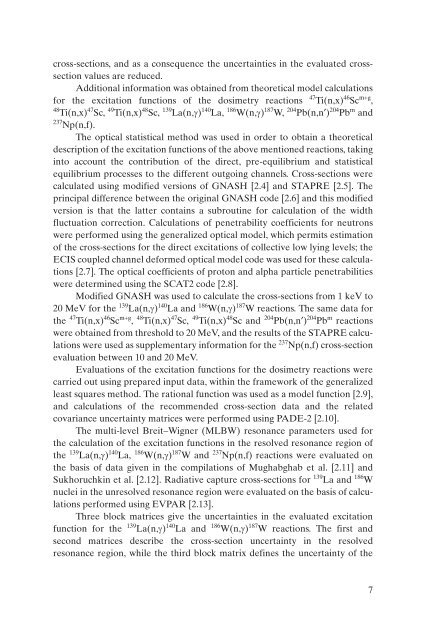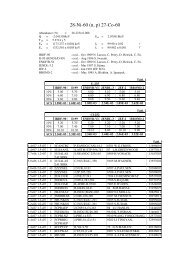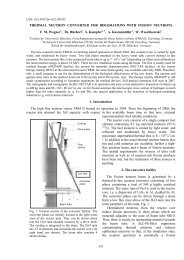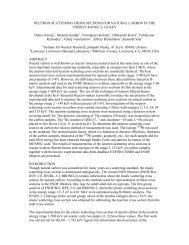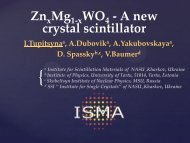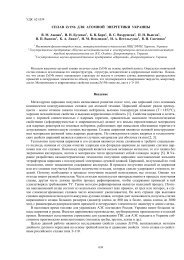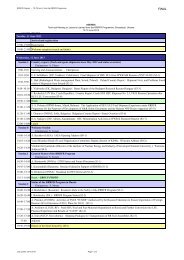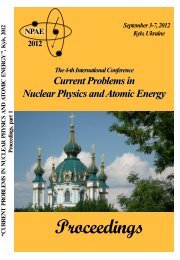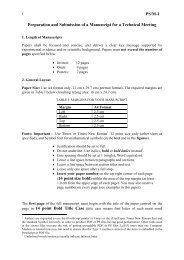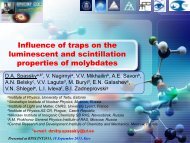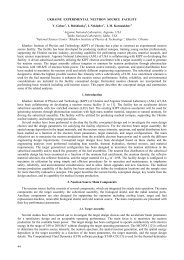International Reactor Dosimetry File 2002 - IAEA Publications
International Reactor Dosimetry File 2002 - IAEA Publications
International Reactor Dosimetry File 2002 - IAEA Publications
Create successful ePaper yourself
Turn your PDF publications into a flip-book with our unique Google optimized e-Paper software.
cross-sections, and as a consequence the uncertainties in the evaluated crosssection<br />
values are reduced.<br />
Additional information was obtained from theoretical model calculations<br />
for the excitation functions of the dosimetry reactions 47 Ti(n,x) 46 Sc m+g ,<br />
48 Ti(n,x) 47 Sc, 49 Ti(n,x) 48 Sc, 139 La(n,γ) 140 La, 186 W(n,γ) 187 W, 204 Pb(n,n¢) 204 Pb m and<br />
237 Np(n,f).<br />
The optical statistical method was used in order to obtain a theoretical<br />
description of the excitation functions of the above mentioned reactions, taking<br />
into account the contribution of the direct, pre-equilibrium and statistical<br />
equilibrium processes to the different outgoing channels. Cross-sections were<br />
calculated using modified versions of GNASH [2.4] and STAPRE [2.5]. The<br />
principal difference between the original GNASH code [2.6] and this modified<br />
version is that the latter contains a subroutine for calculation of the width<br />
fluctuation correction. Calculations of penetrability coefficients for neutrons<br />
were performed using the generalized optical model, which permits estimation<br />
of the cross-sections for the direct excitations of collective low lying levels; the<br />
ECIS coupled channel deformed optical model code was used for these calculations<br />
[2.7]. The optical coefficients of proton and alpha particle penetrabilities<br />
were determined using the SCAT2 code [2.8].<br />
Modified GNASH was used to calculate the cross-sections from 1 keV to<br />
20 MeV for the 139 La(n,γ) 140 La and 186 W(n,γ) 187 W reactions. The same data for<br />
the 47 Ti(n,x) 46 Sc m+g , 48 Ti(n,x) 47 Sc, 49 Ti(n,x) 48 Sc and 204 Pb(n,n¢) 204 Pb m reactions<br />
were obtained from threshold to 20 MeV, and the results of the STAPRE calculations<br />
were used as supplementary information for the 237 Np(n,f) cross-section<br />
evaluation between 10 and 20 MeV.<br />
Evaluations of the excitation functions for the dosimetry reactions were<br />
carried out using prepared input data, within the framework of the generalized<br />
least squares method. The rational function was used as a model function [2.9],<br />
and calculations of the recommended cross-section data and the related<br />
covariance uncertainty matrices were performed using PADE-2 [2.10].<br />
The multi-level Breit–Wigner (MLBW) resonance parameters used for<br />
the calculation of the excitation functions in the resolved resonance region of<br />
the 139 La(n,γ) 140 La, 186 W(n,γ) 187 W and 237 Np(n,f) reactions were evaluated on<br />
the basis of data given in the compilations of Mughabghab et al. [2.11] and<br />
Sukhoruchkin et al. [2.12]. Radiative capture cross-sections for 139 La and 186 W<br />
nuclei in the unresolved resonance region were evaluated on the basis of calculations<br />
performed using EVPAR [2.13].<br />
Three block matrices give the uncertainties in the evaluated excitation<br />
function for the 139 La(n,γ) 140 La and 186 W(n,γ) 187 W reactions. The first and<br />
second matrices describe the cross-section uncertainty in the resolved<br />
resonance region, while the third block matrix defines the uncertainty of the<br />
7


